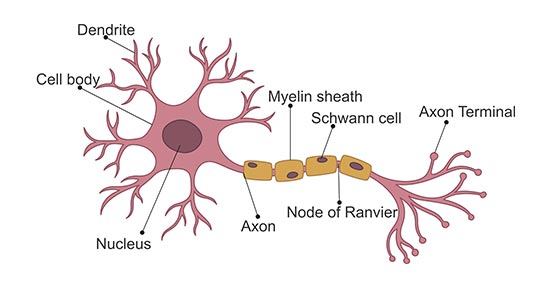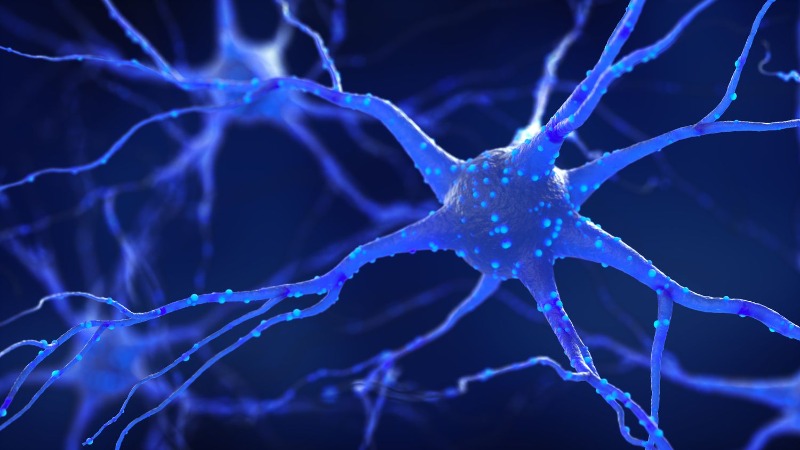In the vast and intricate world of biology, the nervous system stands as one of the most fascinating and complex systems that governs almost all functions of living organisms. At the very heart of this system lies the neuron, a specialized cell responsible for transmitting information throughout the body. But what is neuron, and why is it considered the foundation of the nervous system? In this article, we will explore the fundamental characteristics, structure, and function of neurons, shedding light on their pivotal role in maintaining life as we know it.
Understanding “what is neuron”
Neurons, customarily designated as nerve cells, embody the quintessential functional units orchestrating the nervous architecture. Unlike other cells in the body, neurons possess a unique ability to receive, process, and transmit electrical and chemical signals, enabling the coordination of actions, thoughts, and bodily functions. But what is neuron in terms of its significance? Neurons are essential in connecting various parts of the body, from the brain to the spinal cord and down to the most distant extremities.
These cells communicate with each other through complex networks known as neural circuits, forming a pathway for information to travel. By doing so, neurons help regulate bodily functions such as movement, sensation, memory, and even emotions. Without them, the body would not be able to respond to stimuli or perform coordinated actions.
A closer look at its structure of neuron
To truly understand what is neuron, it is essential to examine its structure. Each neuron comprises three primary components: the cell body (soma), dendrites, and an axon. Together, these parts enable the neuron to perform its essential functions.
- Cell body (Soma): The soma is the central part of the neuron, containing the nucleus, which houses the cell’s genetic material. It plays a critical role in maintaining the overall health and function of the neuron by synthesizing proteins and other substances required for cellular activity.
- Dendrites: These are branch-like extensions that protrude from the cell body. Dendrites act as the receiving end of the neuron, capturing signals from other neurons and transmitting them toward the soma for processing.
- Axon: The axon is a long, slender projection that transmits electrical signals away from the soma to other neurons, muscles, or glands. In many neurons, the axon is covered by a myelin sheath, which serves to insulate and speed up the transmission of electrical impulses. At the end of the axon, there are synaptic terminals that release neurotransmitters, which carry the signal to the next neuron.
How do neurons communicate with themself?
The question what is neuron goes beyond understanding its physical structure. Neurons are unique because of their ability to generate and transmit electrical impulses known as action potentials. This process of signal transmission is fundamental to how the nervous system functions.
When a neuron is stimulated by an external or internal trigger (such as a sensory input or a chemical signal), it generates an action potential. This electrical impulse travels down the axon toward the synapse, where it triggers the release of neurotransmitters. These chemicals then cross the synaptic gap and bind to receptors on the dendrites of the neighboring neuron, continuing the chain of communication.
This method of signal transmission is the foundation for all neural activity, from reflexes to complex cognitive processes. It allows neurons to coordinate bodily functions and respond to environmental stimuli in real time.
Understanding neurons’ diverse roles
One key aspect of what is neuron lies in its diversity. Neurons come in various forms, each specialized for different tasks. Broadly speaking, neurons can be classified into three types based on their function:
- Sensory neurons: These neurons are responsible for transmitting signals from sensory receptors (such as those in the skin, eyes, and ears) to the central nervous system (the brain and spinal cord). Sensory neurons allow us to perceive the world around us by detecting external stimuli like light, sound, and touch.
- Motor neurons: As the name suggests, motor neurons are involved in controlling movement. They carry signals from the central nervous system to muscles and glands, enabling actions such as walking, talking, and even breathing.
- Interneurons: These neurons act as connectors within the nervous system. Found primarily in the brain and spinal cord, interneurons relay messages between sensory and motor neurons, playing a crucial role in information processing and decision-making.
The importance of neurons in the brain
The brain is perhaps the most neuron-dense organ in the body, containing an estimated 100 billion neurons. These neurons work together to create intricate networks responsible for thought, memory, emotion, and consciousness. So, what is neuron in the context of the brain? Neurons in the brain are the drivers of all cognitive processes. Their connections, called synapses, are where learning and memory take place.
Upon assimilating unprecedented knowledge, the cerebral structure engenders novel synaptic conduits. The more you practice a skill or recall information, the stronger these pathways become, illustrating the brain’s remarkable plasticity—its ability to change and adapt over time. Without neurons, the brain would not be able to function, leaving us unable to learn, think, or make decisions.
The challenge of neuron regeneration and repair
Contrary to the regenerative prowess exhibited by myriad other corporeal cells, neurons demonstrate restricted restorative capacities. Once damaged, most neurons cannot easily repair themselves, which raises challenges in the treatment of neurodegenerative diseases such as Alzheimer’s or Parkinson’s. This limited regenerative capacity also makes recovery from brain injuries and spinal cord damage particularly difficult.
While neurons can regenerate some components, such as the axon, the overall repair process is slow and often incomplete. Understanding what is neuron also involves recognizing the limitations of these vital cells in terms of self-repair and the ongoing scientific efforts to find ways to enhance neuron regeneration.
The key to understanding the nervous system
In summary, what is neuron? A neuron is far more than just a cell in the nervous system; it is the cornerstone of all nervous activity, responsible for processing and transmitting the information that allows living beings to move, think, and feel. From their structural complexity to their role in the brain’s intricate networks, neurons are vital to every aspect of life.
As science continues to explore and understand the potential of neurons, their study could lead to groundbreaking treatments for neurological disorders, further highlighting their critical importance. By understanding neurons better, we unlock the door to a deeper comprehension of how life functions at its most fundamental level.

